Monschau - small town on the Rur
You have to know it, otherwise you will pass it. Would Monschau not be one of the goals of our pleasure trip through Nordrhein-Westfalen, we would never have known that this beautiful place existed. The bypass road passes above the town without revealing a view of the historic old town, its castle and the Rur valley. Only an inconspicuous small sign indicates that a street branches off into the historic town center. Our navigation device takes us around the town to the other entrance on Laufenstrasse. This is where the Hotel Lindenhof is located, where we stay overnight. The dignified and well-kept Garni Hotel is located about a ten-minute walk from the town center and just a few steps below the historic mustard mill, which is known far beyond the town.
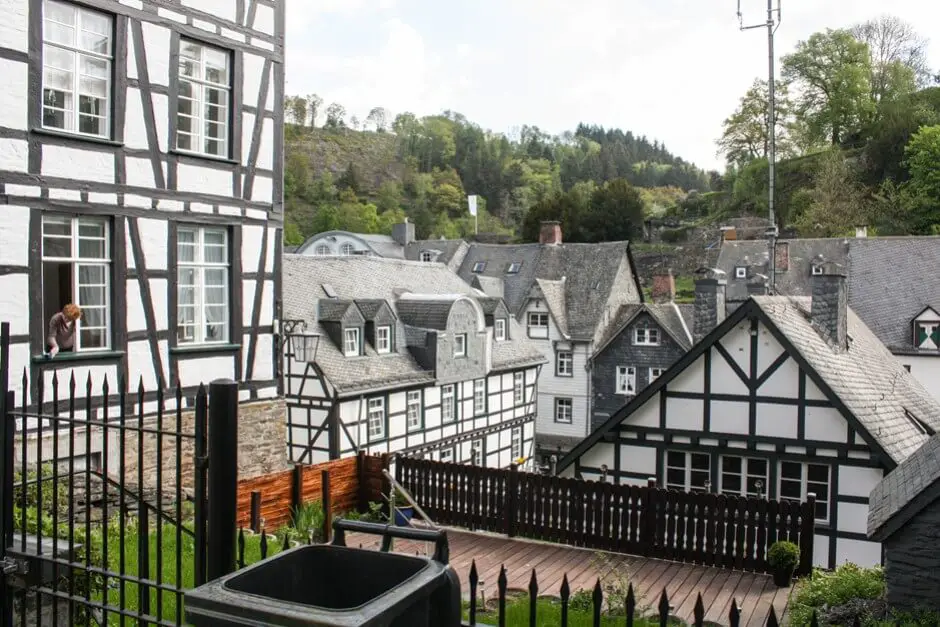
Monschau - historical gem in the valley of the Rur
We park our car at the hotel and follow Laufenstraße into the town. The further we go down the mountain, the more clear it is that this place is special. When the tarred road finally turns into narrow streets with bumpy cobblestones and modern architecture is replaced by medieval half-timbered houses, Monschau has already won our hearts. Time seems to stand still here. If a car didn't clatter past us every now and then and struggle around the tight curves, we might think we had traveled back in time. In 1198 Monschau was first mentioned in the annals of history.
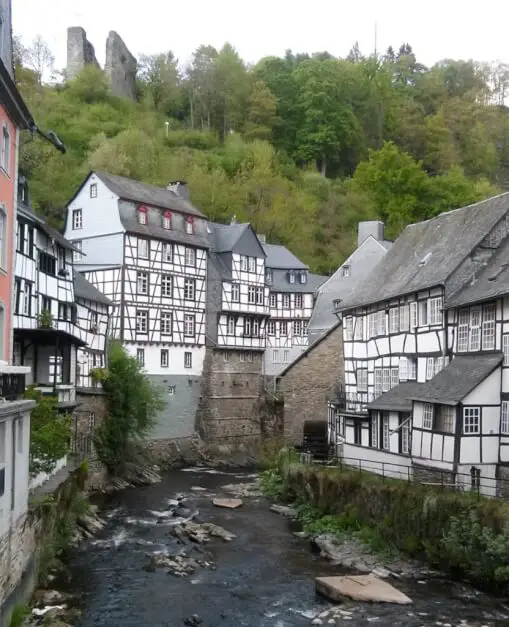
A half-timbered town
Some house facades, which are quite crooked, are supported by the neighboring house. The half-timbered houses that line the city street are also narrow. To the left and right, the banks of the Rur valley rise steeply until they reach the wide expanses of the High Fens, over which the wind blows unchecked. Monschau and its houses, on the other hand, lie protected from the stiff breeze - and perhaps from some of the injustices in its history - in the depths of the valley. Anyone who lives here has to be good on foot. In addition to the streets along the Rur, there are narrow streets and stairs uphill straight from the city center.
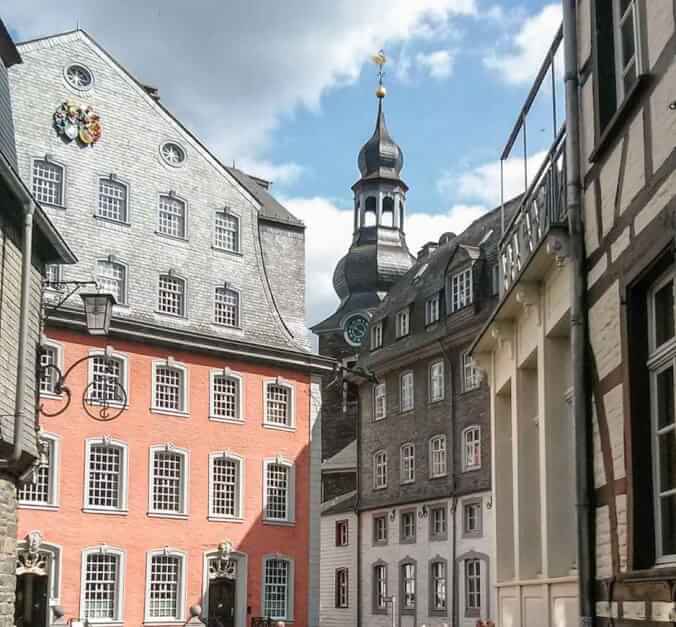
Monschau owes its prosperity to Protestant clothiers
In the city center, on Scheiblerplatz, there is a really magnificent building: the Red House. This owes its name to the color. It was once the seat of the Scheibler cloth-making dynasty. Protestant cloth makers, who fled Catholic Aachen during the Thirty Years' War, helped Monschau to prosper. Montjoie, as Monschau was still called at that time, granted its residents freedom of religion. Therefore, the cloth-maker refugees were able to settle here. They thanked the city by making it rich.
The Red House is one of the largest houses in the cityscape of Monschau and testifies to the success of the Scheibler cloth maker family. It was at the same time a house, an office, and a warehouse. It also housed the workshops in which the fine cloths were made. These were exported from Monschau to all of Europe. It was not until the Prussian customs policy in the 19th century and the secluded location in the Eifel that cloth-making in the city fell. The last spinning mill closed its doors in 1982.
Do you like to travel by motorhome?
- Do you want to rent a motorhome? Then you will find information and a selection in these booking options here. Rent a motorhome or a camper near you here. Or would you prefer to stay overnight in a roof tent on the car? Also the overnight stay in camping tents is possible.
- Check our packing list for campers to see whether you have packed everything for your motorhome tour.
- Near Monschau is e.g. E.g. thePerlenau Nature Camp,Perlenau 7, 52156 Monschau. But there are other campsites near Monschau. You can relax there after a day trip Dutch Oven or on the portable grill or maybe on a campfire . You can also find Dutch oven accessories here.
- Practical accessories for the mobile home you can also find here.
- Why is a folding e-bike useful when camping?
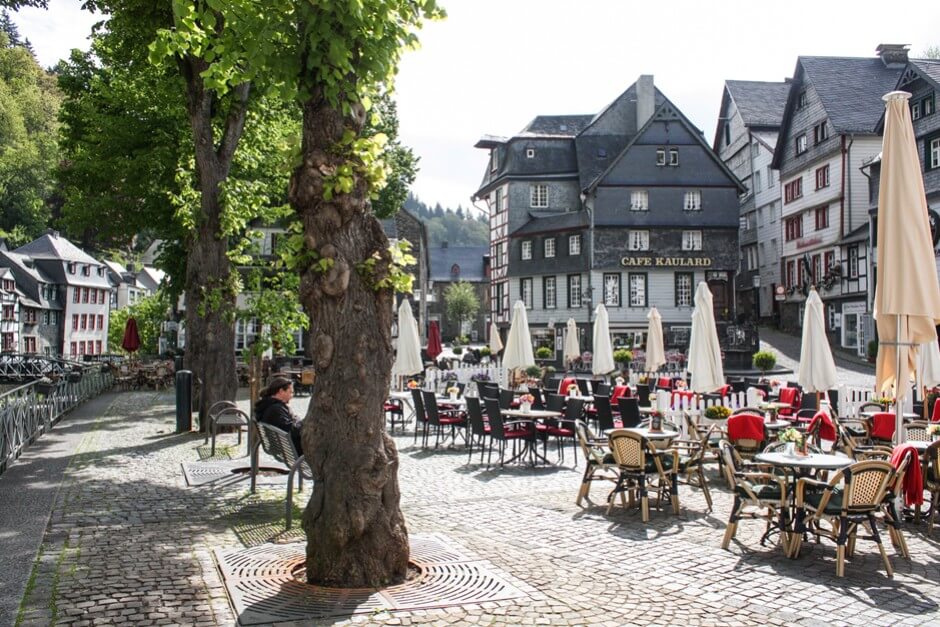
Today tourism in Monschau plays the main role
When we take our first walk through Monschau on Sunday afternoon, there is hustle and bustle in the city. Buses bring visitors into the place who are just as impressed by its beauty as we are. On Monday morning, however, we have the city almost to ourselves. Many of the stores are still closed or are just getting ready for the week ahead. The place seems a little sleepy after the Sunday weekend business. This gives us the opportunity to take a closer look at the place.
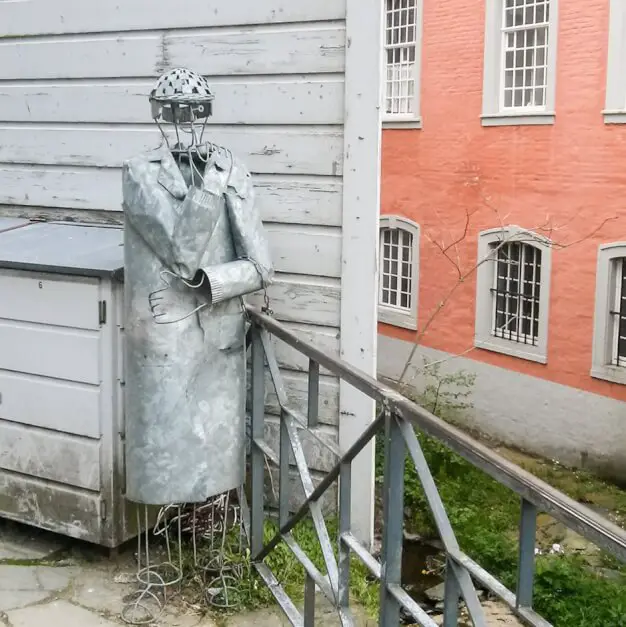
What has Sherlock Holmes lost in Monschau?
We come across the enigmatic metal figure of Sherlock Holmes on the banks of the Rur, where the Laufenbach flows into it. With the typical pipe in his mouth, the flat cap on his head and the long coat, the figure is hard to miss. In fact, however, the statue of Sherlock Holmes is reminiscent of a writer from the Eifel: Jacques Berndorf - once a renowned freelance journalist - began writing crime novels in the 80s, the locations and stories of which he researched in detail and reproduced in detail in his books.
If Berndorf writes about a road in the Eifel, in which three lime trees stand, then this road really exists, and if one visits these, one finds the described trees. How could it be otherwise: Monschau also appears in his Eifel thriller. So if you want to learn something about the Monschau region and the Eifel, you can do so in a very entertaining way with the reading of the Eifel thriller of Berndorf.
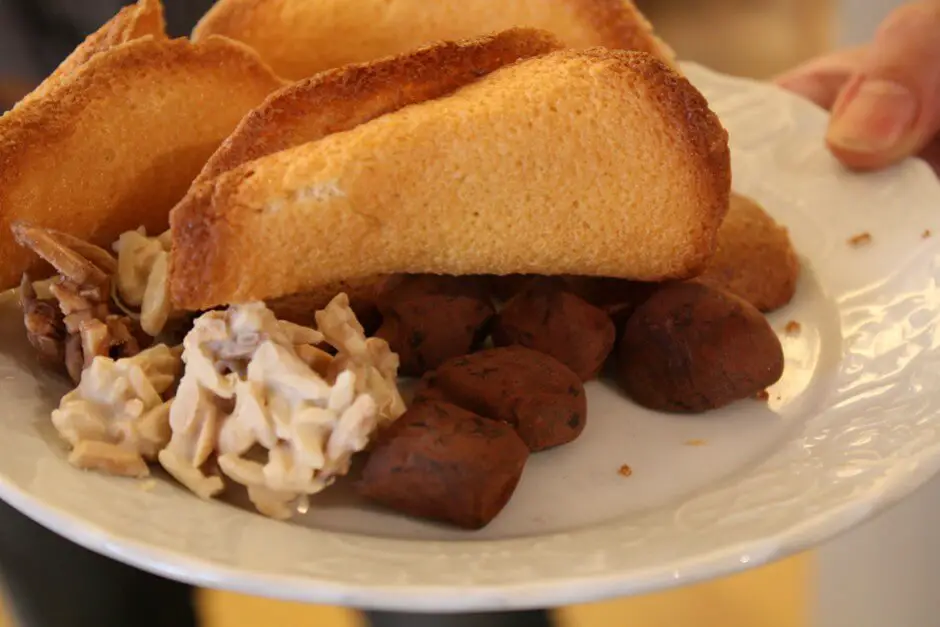
Sweet specialties from Monschau
On our tour through Monschau, we notice the many cafés such as the Café am Roten Haus, the Schloßcafé in the Hotel Royal or the Café Kaulard, which are filled to the last seat on Sunday afternoon. When asked if there were any special specialties in Monschau that we should know, our companion replied: “Of course! There are the Monschau Dütchen, the Vennbrocken and of course the Printen. ”
The Printen will probably fight back Aachener on the other hand, if Monschau claims their invention for itself. But the sachets are guaranteed to be typical of the place, which are bag-shaped biscuit bags filled with ice cream, cream or fruit and served with coffee. The Vennbrocken are pralines that are reminiscent of the peat briquettes that were once cut in the High Fens. The Vennbrocken are filled with marzipan, cream Cointreau truffle or crispy nougat. The Christmas-smelling Printen are made in Monschau and the Eifel all year round, as they are needed for certain recipes that are cooked all year round. The most famous example of this is the Rhenish Sauerbraten, whose sauce is refined with Printen or Printen spices.
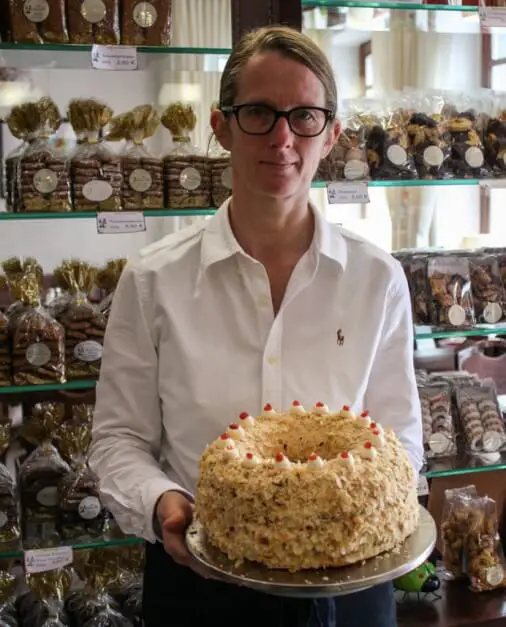
And finally ...
Monschau has many sites worth visiting: its history, which is beautifully reflected in its historic cityscape; the mentality of its inhabitants, which is best known in the Eifel crime novels by Jacques Berndorf. And the sweet specialties that we discovered in the cafes on site. Monschau has even more to offer in terms of cuisine.
That has to be in the suitcase for the visit to Monschau
-
- Comfortable Shoes. In Monschau you walk a lot.
- forget comfortable pumps not, because in some Monschau restaurants you dine in elegant surroundings.
- A backpack, where you put a picnic. For longer hikes we recommend one backpack.
- An Camera* for the photo opportunities that Monschau offers.
If you purchase via a link marked *, we receive a commission, which we use to run this blog.
Here is our collected tips on how to enjoy the Eifel can.
Do you know this?
- Pure enjoyment - three tips in Monschau in the Eifel
- Hike at the Rursee in the Eifel
- Aachen sights for a day
- Enjoy beautiful cities in Austria
- The most beautiful small towns in Germany
- Most beautiful cities in Bavaria away from the hustle and bustle
- Compare motorhome prices here.
- Or do you prefer to travel with him Rooftent or Tent?
- Gifts for travelers
Source: own research on site. We would definitely like to thank you NRW tourism and Tourism Monschau for the kind invitation to this pleasure trip.
We are also taking part in the blog parade with this article Small towns in Germany. There you will also find other small towns worth seeing that are worth a visit.
More travel tips for Slow Travel You can find trips under these links. Plus, discover others cities in Germany.
Text: © Copyright Monika Fuchs and TravelWorldOnline
Photos: © Copyright Monika Fuchs and TravelWorldOnline
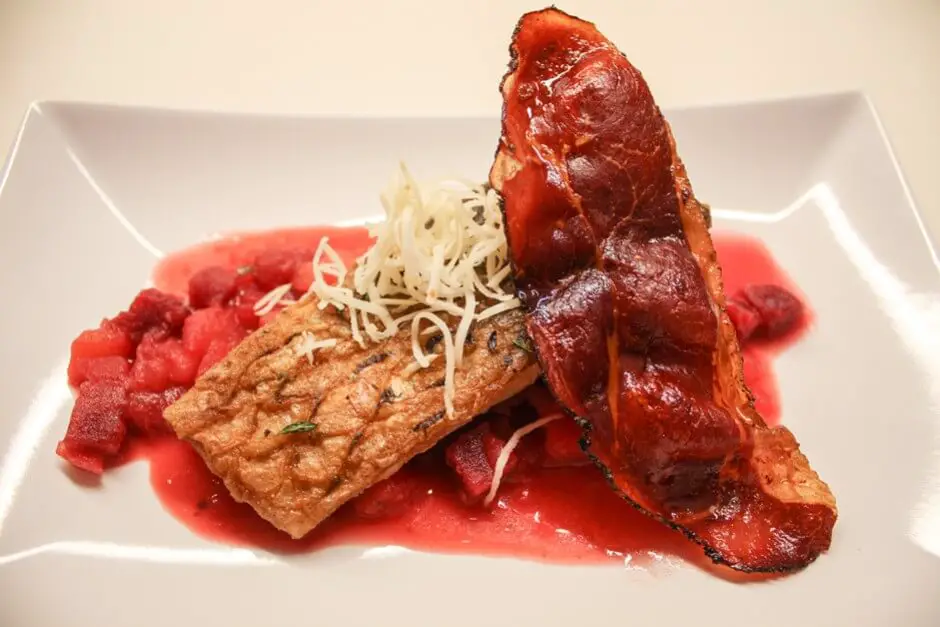
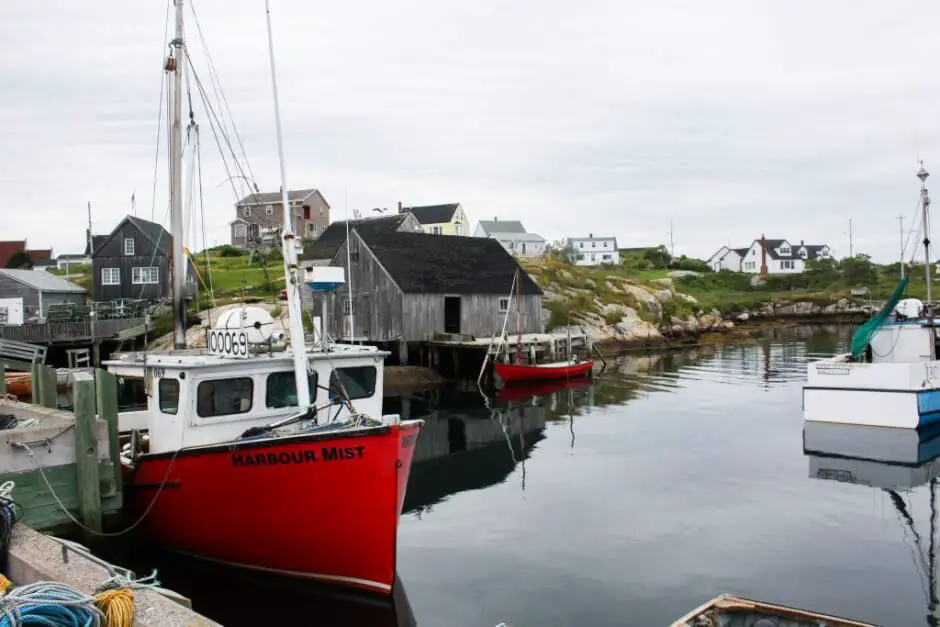
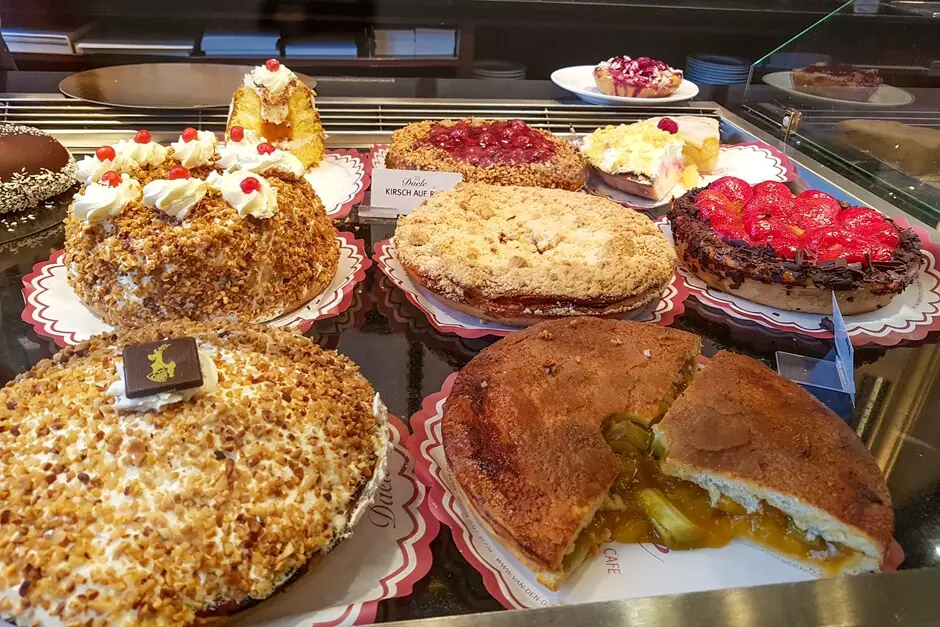
J'adore votre article!
Success!
Thank you very much.
Dear Monika,
what a pretty town! I have never heard of Monschau, but I think that I would like it there ... I really like such old town centers. To be honest, I have never eaten Sauerbraten. Should I catch up ?!
Best regards,
Barbara
I love Rhenish Sauerbraten! :-) And in such a city he is sure to eat the best. Nice if the place has managed to attract tourists. So many actually pretty rural NRW place has not made the jump and neglected.
Kind regards
Sabine
Liebe Sabine
There is hardly any danger in Monschau. On the weekend we were there, a lot of people were traveling around the city. It was quite pleasant on Monday morning when we almost had the city for ourselves.
Best regards,
Monika
I have to admit that I really like such small places, with half-timbered houses, small streets and then a small river meanders through. It has something rustic. Thanks for the insight how beautiful Germany is.
Hi Anja,
Monschau is already a special place with its half-timbered houses and the buildings from the past centuries. That makes the place picture very authentic.
Best regards,
Monika